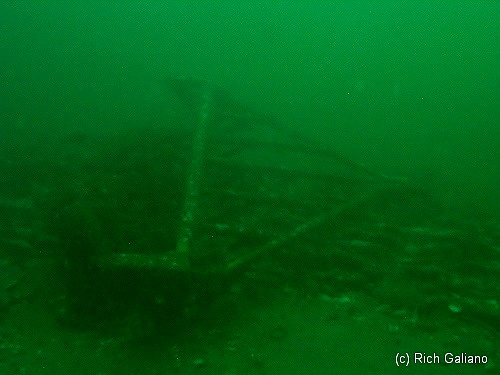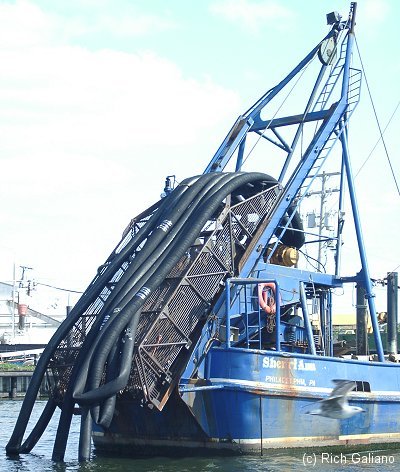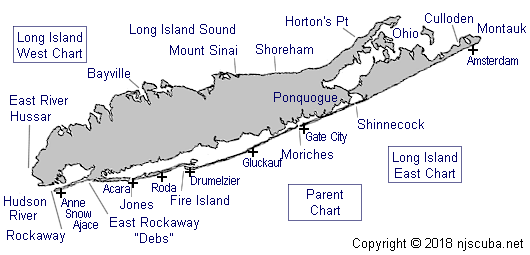Traps & Dredges
While not exactly shipwreck artifacts, lobster traps, scallop dredges, and other fishing equipment are not uncommon sights on and around New Jersey shipwrecks.
Lobster Traps
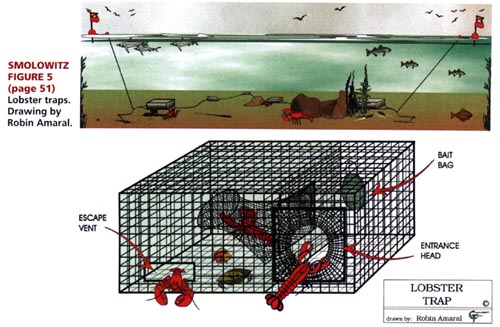
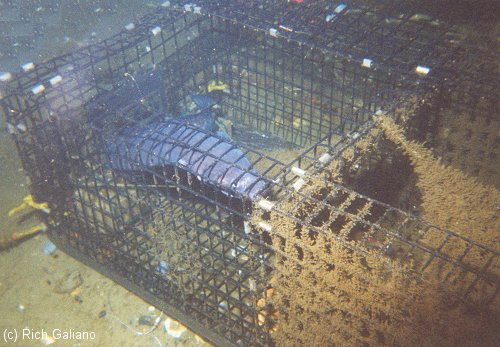
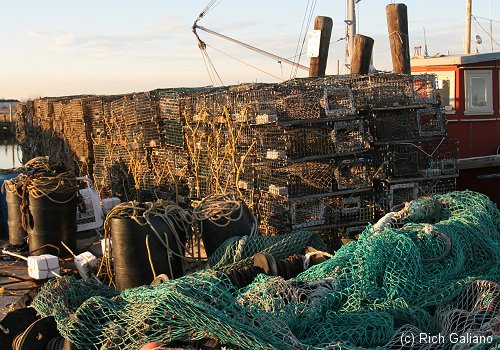
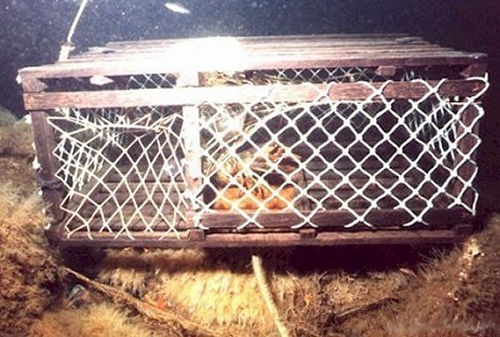
Shellfish Dredges
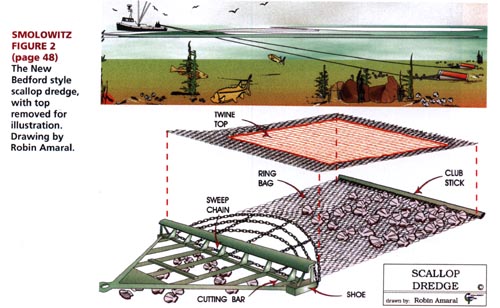
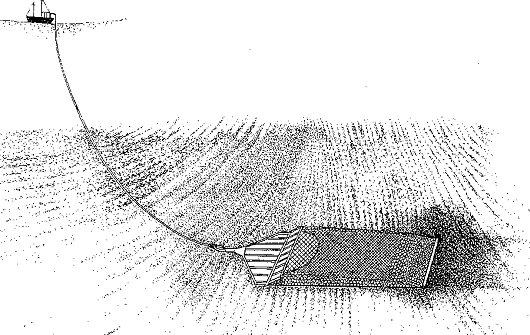
Dragger captains try to avoid getting their gear caught in underwater obstructions, and have long lists of numbers of places to avoid. However, not all snags are known, and new ones are often discovered the hard way. When a clam dredge hangs up on an old shipwreck, it is often just pulled right through. Many of our old wooden wrecks are simply torn apart this way. Even metal wrecks can be damaged, as was the subway car upon which all the furor was based. I once watched a hung-up clam boat pulling in all directions to free its dredge, like a dog wrapped around a tree. If a large, expensive clam dredge breaks free, it is usually recovered with divers, who reattach the tow line.
Smaller scallop dredges seem more likely to break free and be lost than clam dredges. Scallop draggers also seem to take more chances, towing closer to known obstructions, because that is where the scallops are. As a result, a number of old shipwrecks are decorated with lost scallop dredges. The only sunken clam dredges I know of went down with their ships, such as the Beth Dee Bob and the Adriatic.
